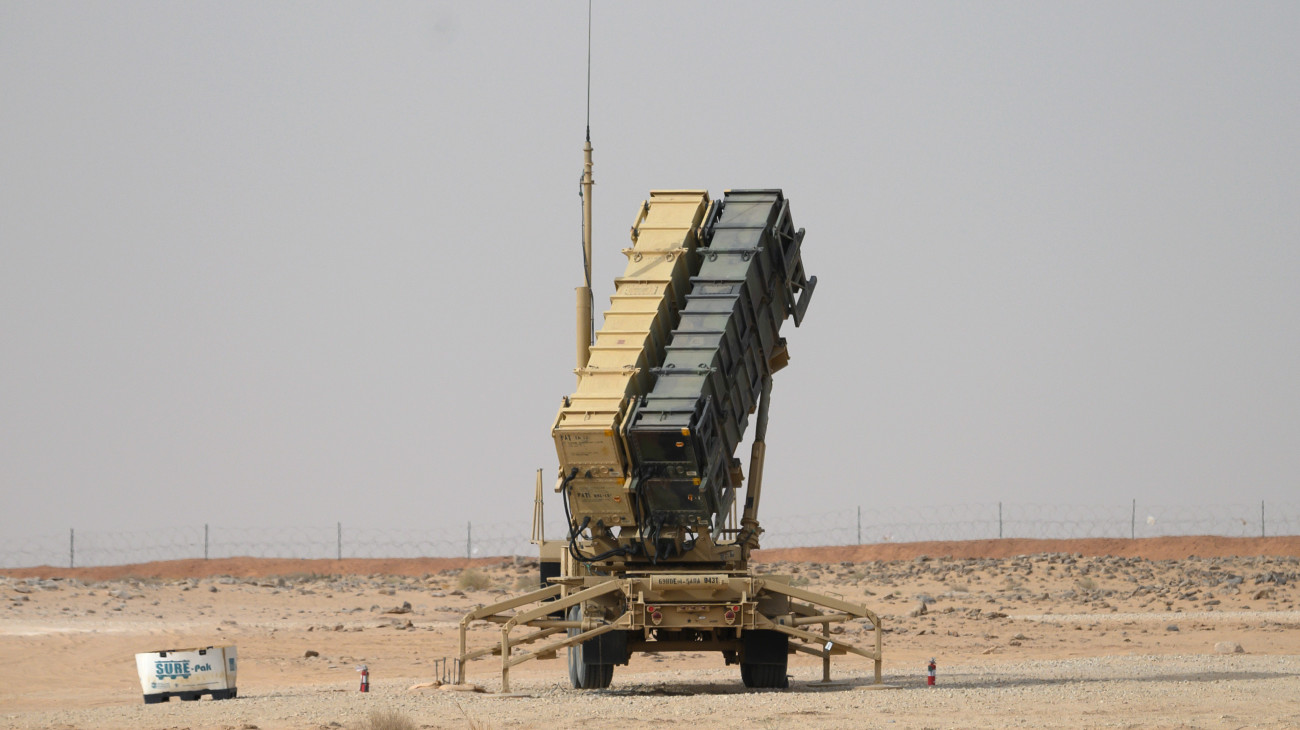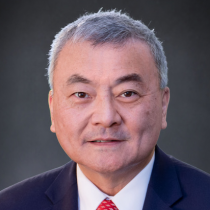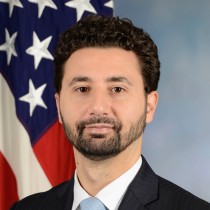

Introduction
Last week, the Biden administration released its new Conventional Arms Transfer (CAT) policy. Like President Joe Biden’s foreign policy writ large, the new CAT policy emphasizes human rights and strategic competition with China. In the latest installment of the Defense Rapid Reaction series, experts from MEI’s Defense & Security Program provide their views on what the new CAT policy means and how the historical tension between human rights and national security might play out in U.S. policy toward the Middle East.
Reactions
-
Kevin Donegan
Kevin Donegan

It’s the system not the policy...
Rightly so, from a policy perspective, there has been a fair amount of discussion on the Biden administration’s new CAT policy as having a greater human rights focus.
However, in practice, it is less the policy itself and much more the system and process that implements CAT that have the greatest impact on both our national security and our relationships with our allies and partners. Unfortunately, for many reasons, our system has allowed virtually any entity in the interagency a means to stop or delay a transfer even if it had been previously approved. When this is combined with a weak and slow review process to evaluate the objection, it erodes what is one of the fundamental objectives of our CAT policy — making the United States a partner of choice to achieve our national security objectives.
While I was in U.S. Central Command (CENTCOM), two separate CENTCOM commanders made this very clear when they told me, after every visit with their counterparts in the region, that the very first item brought up was an unfulfilled promise for a CAT made by the United States. What made this breach of trust so painful was that many of these were for long-overdue upgrades for aging weapons systems needed to allow them to remain interoperable with our U.S. systems. In other words, to them, we were withholding upgrades needed to allow them to work better with us.
Clearly the U.S. benefits greatly when our partners of choice can provide for their own defense, but a new policy won’t achieve this objective. Instead, we should focus our efforts on an overhaul of the CAT implementation system and process.
Vice Admiral Kevin “Kid” Donegan (ret.) is the former commander of U.S. Fifth Fleet, Naval Forces Central Command, director of operations at U.S. Central Command, and commander of our forward deployed Carrier Strike Group based in Japan. He is currently a distinguished senior fellow at MEI.
-
Melissa Horvath
Melissa Horvath

Laudable new policy will impact key MENA relationships amidst reassurance efforts
In Biden’s CAT policy, we see the proverbial pendulum swing away from the previous administration’s prominent focus on economic interests and toward a greater emphasis on human rights. The new policy calls for a much higher, albeit subjective, standard to deny arms transfer authorizations when it is “more likely than not” the recipient could use the transferred arms to violate human rights.
When put into practice, the new policy will likely add additional reviews and layers to arms transfer approvals, especially in the already-protracted Foreign Military Sales (FMS) process, which is often criticized as too slow and bureaucratic. However, based on the administration’s track record on arms sales approvals so far, it’s likely that many sales, especially for defensive systems, will ultimately go forward.
How the administration puts the policy into execution will also impact key relationships, especially in the Middle East at a time when the U.S. is trying to reassure regional partners of its commitment. Given that half of the U.S.’s top 10 arms buyers are from the region, and the fact that some these same countries have (rightfully) faced a great deal of scrutiny for human rights violations, the administration will need to execute the policy in a way that considers the value of each transfer decision in maintaining relationships in relation to how much it contributes to upholding U.S. values — a difficult balance to be sure.
Melissa Horvath served at CENTCOM from 2017 to 2021 as a Strategic Logistics Planner focusing on the Iran Problem Set. She was previously an Assistant Professor of Security Cooperation at the Defense Institute of Security Cooperation Studies (now Defense Security Cooperation University) and currently supports Security Cooperation (SC) workforce education. She is also a Non-Resident Senior Fellow with MEI’s Defense and Security Program.
-
Michael K. Nagata
Michael K. Nagata

Little “new” for practitioners familiar with inherent tensions of arms transfers
The recently released CAT policy articulates worthy goals related to the provision of weaponry to allies and partners. However, there is little here that is new for practitioners, who are already familiar with the “tensions” that always attend any proposed arms transfer, such as the challenges of balancing speed-of-delivery while taking due care over whose hands actually receive them, or assisting an ally without strategically destabilizing an environment, and beyond.
One of any new Arms Transfer Policy's most important aspects, though not yet fully fleshed out, is “Arms Transfers Involving Emerging Technologies.” As mankind continues to hurtle through our “digital age,” the rapidly growing power of new digital technologies (e.g. artificial intelligence, robotics, high-speed data processing, etc.) is increasingly becoming indispensable for the fielding of new military tools and weapons. Perhaps the U.S. government’s greatest challenge in this domain will be to find a way to rapidly provide such technology-centric capabilities to allies and partners, who will increasingly need them from the U.S., while ensuring the potential long-term consequences of providing such powerful instruments are properly anticipated and accounted for.
Nowhere will striking this balance be more important than in the Middle East, where the U.S. faces the unhappy combination of: 1) a significant “trust deficit” with many of our most important allies; 2) the continued expansion of bad actors like China, Russia, and Iran that are far less constrained, and far faster, in providing military tools to anyone they like; and 3) a widespread popular perception that America has lost interest in the region and its peoples.
Lt. Gen. (ret.) Michael K. Nagata is a distinguished senior fellow on national security at MEI. He retired from the U.S. Army in 2019 after 38 years of active duty, with 34 years in U.S. Special Operations. His final position was director of strategy for the National Counterterrorism Center from 2016 to 2019.
-
Bilal Y. Saab
Bilal Y. Saab

Despite emphasis on human rights, a dramatic difference in execution is unlikely
For all the emphasis on human rights in Biden’s CAT policy, I am not convinced there will be a dramatic difference in execution. Three factors inform my view. First, even though the policy officially came out last week, the administration has been effectively implementing it since August 2021, and the record shows that it’s more or less business as usual. Is it possible that new changes will be made now that the policy is released? Yes, but it’s unlikely. Second, a long history rich with data on successive CAT policies, spanning Democratic and Republican administrations, shows that while the tone changes over the years, the execution barely does. Even President Jimmy Carter, who was most serious about human rights abroad, issued a CAT policy that sold tons of military equipment to authoritarian governments in the Middle East and elsewhere. Third, the exigencies of strategic competition with China will ultimately trump concerns over human rights.
What’s ironic about this CAT policy, like many of its predecessors, is that critics will say — and already have said — that it doesn’t do enough to support U.S. policy objectives. The human rights and arms control communities are already unhappy with it because, in their view, it conflicts with liberal values and promotes arms races. The national security camp, or the pragmatists, are concerned that the politics surrounding the policy might muddy the waters and constrain arms sales to allies and partners.
But when the dust settles, we’ll all come to see that this new policy will not be substantially different in practice than any of its predecessors over the past several decades.
Bilal Y. Saab is a senior fellow and director of the Defense and Security Program at MEI.
-
Joseph L. Votel
Joseph L. Votel

The biggest problem is bureaucracy and indefinite “maybe’s”
In 2016, as the new CENTCOM commander, the biggest grievance I heard from our regional partners was about our processes for providing them with arms and other military equipment. The system, they complained, was prolonged and bureaucratic and subject to unplanned stoppages at almost every step. Rather than getting a “yes” or “no,” — they were caught in the middle with an indefinite “maybe.” As a result, partners with shared security concerns felt we were hampering their ability to move forward on our common interests. It was an objective point of friction across the region.
The release, last week, of the new CAT policy by the Biden administration is an opportunity to articulate the policy clearly and revisit all the processes around it. As we have seen over the last year, the timely provisioning of equipment to the Ukrainians is not only helping them, but it directly supports our national security interests and those of our European partners and allies. Arms transfers are a critical tool supporting our national security objectives.
In addition to communicating our policy clearly and directly to our partners, we must also take this opportunity to look at the processes that support it. An excellent place to start is with American businesses and industries, whose insights and recommendations could instantly improve the process. Our leaders, in Congress and across the government, must exercise urgency and consult, listen, and adopt best practices and insights. Regions like the Middle East, Central and South America, and Africa are all locations where a well-executed conventional arms transfer program can advance our interests, preserve our influence, and permit us to concentrate more of our own capabilities in the strategically competitive and consequential European and Indo-Pacific regions. A good policy is a great start — now the hard work of practical implementation is at hand.
Gen. (ret.) Joseph L. Votel is a distinguished senior fellow on national security at MEI. He retired as a four-star general in the U.S. Army after a nearly 40-year career, during which he held a variety of commands in positions of leadership, including most recently as commander of CENTCOM from March 2016 to March 2019.











